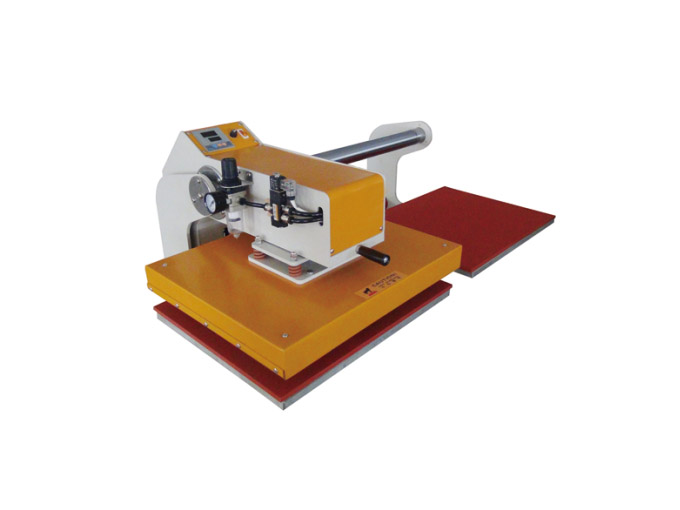1, Walking printing machine
Alias: Run-time printer. A flatbed printer is an automated walkthrough printer that processes a desired pattern and pattern on a variety of planar materials in a variety of ways using one or more dyes or pigments of different colors. Controlled by PLC, it can automatically print and print glue, cement slurry, ink, thick plate and other materials. Widely used in clothing (T-shirt), cutting, clothing, leather, luggage, transfer paper, artificial mosaic, shoes, flocking cloth, thick board, cloth, etc., as well as direct yarn of PVP, PU, PP, PE and other film materials Web printing.
2, Thermal transfer printing machine
Belongs to the transfer class. It can be used for thermal transfer of fabrics, garments, garments, socks or other chemical fabrics. In terms of working style, it is very different from flat screen printing and rotary screen printing. Before the cloth, clothing, and garment transfer printing, the sublimation dye ink is printed on a specific printing paper by a printing machine to become a transfer printing paper. Then, one side of the pattern on the printing paper is tightly adhered to the cloth, heated and pressurized, and the sublimation dye ink on the transfer paper is transferred to the cloth by gasification. This printing method is simpler than flat screen printing or rotary screen printing, that is, it does not need to be steamed, washed, dried, and shaped after printing. Unfortunately, wool and cotton fabrics are temporarily unavailable for printing.
3, Digital printing machine
Digital printing works in much the same way as an inkjet printer. In short, digital printing is the digital input of patterns into a computer, edited and processed by computer printing, color separation and mapping systems (CAD), and then directly sprayed through a computer controlled micro piezoelectric inkjet nozzle. A special dye solution is formed into the desired pattern and then according to the tissue. Different fabrics. It is divided into different post-treatments such as drying and fixing. The advantage of this printing method: since the printing process does not require water resources, it does not pollute the environment.
With the development of science and technology, printing machinery is more and more advanced and more humanized, but the best printing machinery is still operated and maintained manually. The normal operation, commissioning and maintenance of the printer will directly determine the print quality of the customer's product and the life of the printer.
